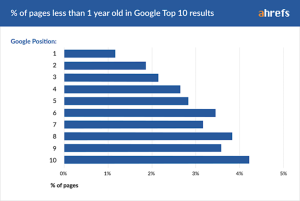E-commerce has become an inseparable part of the business world. Especially now, with almost everyone locked indoors and with the ongoing market conditions (thanks to corona!) real-life shopping seems like a far-fetched dream. Whereas, online shopping has completely taken over and has saved the day for most brands and companies which are thriving, rather flourishing through these sales. With such a tight competition, where several tycoons are competing to maximize their revenues through e-commerce, it is essential to opt for the right strategies to increase the revenue from online stores.
Running a successful e-commerce business is not a cakewalk. The main challenge is to drive traffic to the store, which is difficult without having a proper go to market strategy.
What is E-commerce Optimization?
E-commerce optimization is a holistic approach that helps in improving the website and enables easy conversion of visitors into customers. Ranging from navigation and design to content and product descriptions, everything on the website should be intentionally leading users towards the end goal, which is to purchase the products or services.
With several e-commerce optimization strategies becoming popular these days, it’s important to understand the concepts and aspects functioning behind these strategies. With the right technology and a thorough analysis of the nature of demand and supply, one can effortlessly grow an online store.
Below are the 3 most effective ways to optimize an e-commerce business following which, one can easily see evident growth in online sales especially during the current pandemic-stricken times.
-
Using technology, the right way:
Driven by the comfort of getting products delivered at the doorstep, with every click e-commerce has become faster than ever. All thanks to the latest technology, which enables users to track their orders, find the best deals, and help new business opportunities to inevitably emerge on the go.
Optimizing e-commerce operations
Today’s cutting-edge technology has the capacity to change the face of e-commerce operations entirely by simply optimizing the search of a product or service by adding proper title, description, attributes, and dishing out more nuanced information through questions & answers. Amazon Listing Optimization is one of the best examples for the same. These small additions make a big difference as it makes the operations easy to understand and narrows down the search by making it user friendly.
Advertise for Conversions, Not Traffic
It may be tempting to follow the strategies that drive the most traffic while designing advertising campaigns. However, eyes on a storefront don’t always mean conversion. Optimizing the ad spend especially during the current pandemic times to drive the customers to the storefront and making sure that they are converted is an ideal way to go. Spotlight on the conversions, rather than traffic, boosts the revenue ensuring that the ad spend is truly delivering results. Google Adword, Microsoft Adword, Adroll, Quora, Instagram, etc., are some of the tools that one can use to enhance and optimize conversions.
Seamless User Engagement
Making use of the right technology means providing customers with not only what they want when they want it, but to also retain attention. This can be done by empowering client servicing by building great in-product experiences like in-app messaging. Breaking down walls between product and marketing by providing an omnichannel experience because that’s where the future is. Personalization of the user experience goes a long way because of the added personal touch. All of these methods assure an interconnected customer journey all the way through to purchase.
Improving the bottom line
Focusing on the fraction of customers who spend the most money plays a lead role in improving the bottom line. The primary focus should be on retaining them and encouraging them to return with reward programs, coupons, targeted promotions, and sales. Optimizing ad and indirect spending, improving cybersecurity, and embracing advanced tools are all possible ways to decrease expenditure and, ideally, improve your bottom line.
-
Putting web scraping to good use:
Web scraping is like an e-commerce audit used to secure data from a competitor’s website and scrutinizing it to determine their strengths and weaknesses to gain some insights. This analysis is helpful to identify effective strategies to compete against a business.
Since the market is crowded with competition, web scraping comes handy in creating dynamic pricing software and helps in minimizing the time required to monitor prices across multiple websites. This information gives the insight required to adjust the prices to multiply their profit margins if and when needed. It also identifies the needs of one’s target audience by generating valuable leads that in return helps a business to make required changes to stay on the #1 spot on the global e-commerce giants like Amazon & eBay, who are known to be the largest retailers to adopt dynamic pricing and updates prices every 10 minutes.
-
Consumer Data to the rescue:
Companies spend millions of dollars trying to understand the wants and the needs of their target audience so that it’s a win-win situation for both the company and their customer. This data possesses an in-depth insight that assists in setting competitive pricing. Many companies use this data to optimize the listing of their products or services to improve their ranking. Recently, some businesses were held accountable for coronavirus-based price gouging by Amazon on the account of customer exploitation proving that apart from all the good ways to use it, sometimes there can also be negative implications to it.
Final Thoughts
Optimizing any e-commerce business is a layered, but not a very complicated process. Once a thorough understanding of the market has been unlocked, it becomes easier to adapt to the constantly dynamic needs of the customer. As long as the website is user friendly, with details properly laid out, along with prices that suit the market demand and supply chain, the business should flourish.
Digital & Social Articles on Business 2 Community
(24)
Report Post






